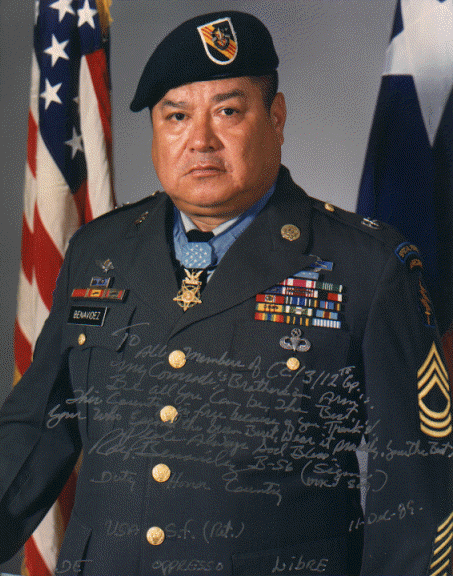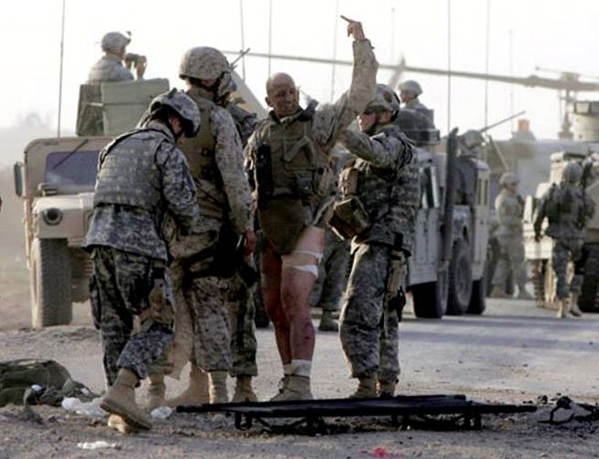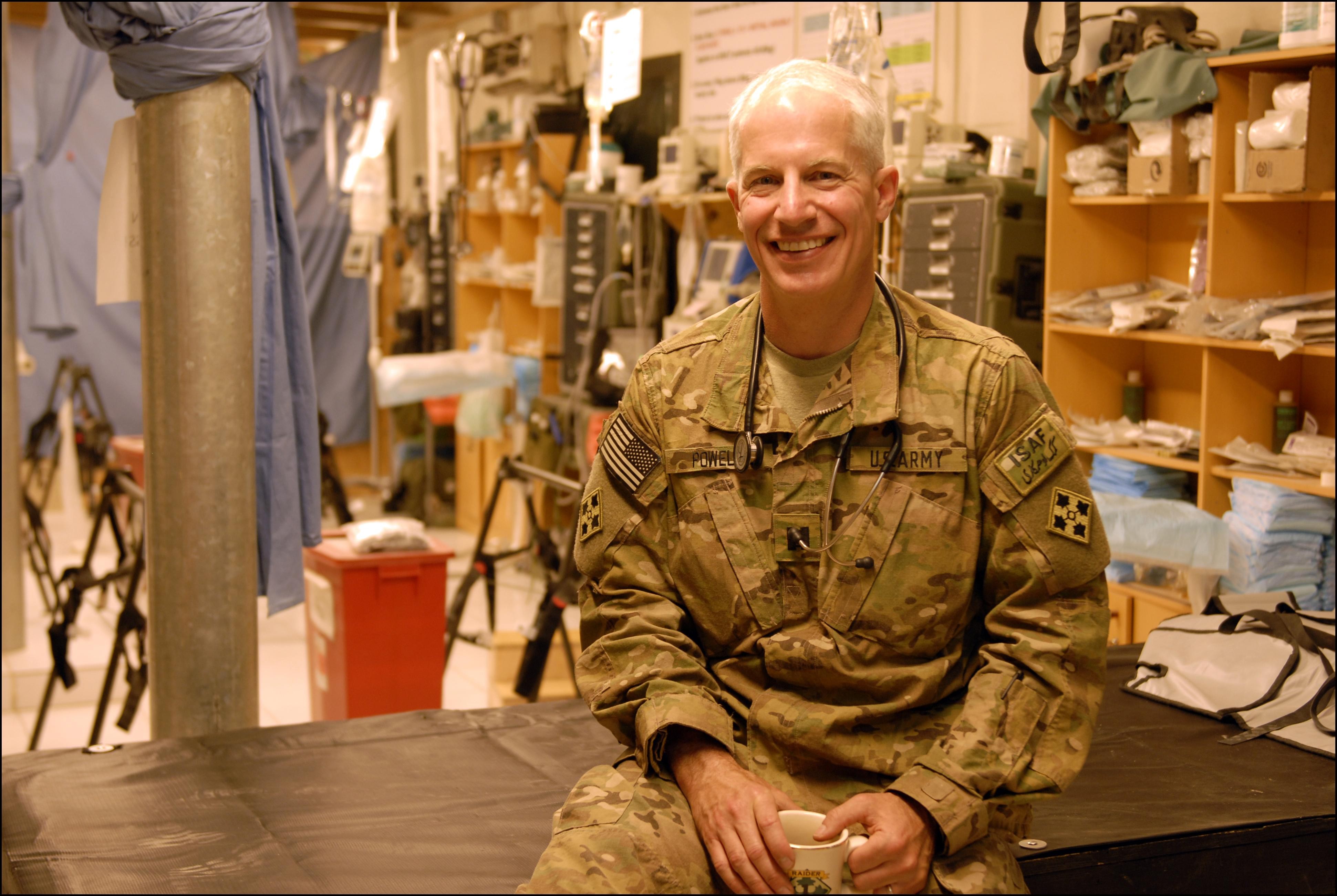- Comms
- Law
- Medic
- News
- Opinion
- Threat Watch
- Training
- Warrior Tools
- Accessories
- Ammo
- Body Armor
- Books
- Clothing
- Commo
- Gear
- Handguns
- Holsters
- Knives
- Long Guns
- ACC
- Accuracy International
- Barrett
- Benelli
- Beretta
- Blaser
- Bushmaster
- Custom
- CZ
- Desert Tactical Arms
- DPMS
- FN
- Forums
- HK
- IWI
- Kel-Tec Long Guns
- LaRue
- LWRC
- McMillan
- Mosin Nagant
- Mossberg
- Para
- Remington
- Rock River Arms
- Ruger Long Guns
- Sabre Defense
- Sako
- SIG Sauer
- SKS
- Smith & Wesson Long Guns
- Springfield
- Styer
- Weatherby
- Wilson Combat
- Winchester
- Magazines
- Maintenance
- Navigation
- Optics
- Sights
- Tech
- Warriors
Posts Tagged US Army
Mike Burghardt: Classic American resilience.
Posted by Jack Sinclair in News, Warriors on 12/Jul/2011 23:07
Mike Burghardt flips off the Iraqi insurgents that failed to blow him up. Classic American resilience.
The HULC: Lockheed Martin’s latest piece of Army equipment
Posted by Jack Sinclair in News, Warrior Tools on 6/Jul/2011 21:37
“The fact that Lockheed Martin’s latest piece of Army equipment is called the HULC (pronounced like the comic book character The Hulk) is appropriate. That’s because the pack management system works as a superhuman “exoskeleton.â€
The name stands for Human Universal Load Carrier, and it’s meant to lighten a soldiers individual load while out in the field while also allowing him to carry things never thought possible. The description from Lockheed Martin is incredible:
The HULC is a completely un-tethered, hydraulic-powered anthropomorphic exoskeleton that provides users with the ability to carry loads of up to 200 lbs for extended periods of time and over all terrains. Its flexible design allows for deep squats, crawls and upper-body lifting. There is no joystick or other control mechanism. The exoskeleton senses what users want to do and where they want to go.”
Lt. Col. (Ret.) Allen West: Define the Enemy
Posted by Brian in Opinion, Threat Watch, Warriors on 8/May/2011 22:31
I am not sure when this speech was given but it was uploaded in Sept. 2009. Allen West is the only person I have seen who speaks plainly about the enemy we face. I value his opinion over any politician’s since he has been to both Iraq and Afghanistan and fought the enemy.
New M240L A Needed Update
The Army has developed a lighter version of the M240B using a titanium alloy. Future versions will include a shorter barrel and a collapsible stock. Read the full article at PEO Soldier.

Army Program Designed To Rapidly Field New Equipment
The program is called Program Executive Office Soldier or PEO Soldier.
Program Executive Office (PEO) Soldier was created by the Army with one primary purpose: to develop the best equipment and field it as quickly as possible so that our Soldiers remain second to none in missions that span the full spectrum of military operations.
As recent operations in Iraq and Afghanistan have vividly demonstrated, getting the right equipment to our military men and women is absolutely critical.
By viewing the Soldier as part of an integrated system, PEO Soldier ensures that the Soldier and everything he or she wears or carries works together as an integrated system. The result is an overall systematic design that benefits Soldiers by enhancing their ability to accomplish individual and collective tasks, improving quality of life, building confidence, and saving lives. In this respect, PEO Soldier is at the vanguard of Army transformation.
Headquartered at Fort Belvoir, Virginia, PEO Soldier designs, develops, procures, fields, and sustains virtually everything the Soldier wears or carries. By employing innovative concepts and technologies, PEO Soldier has made great strides in quickly getting improved equipment into the hands of Soldiers when and where they need it.
It is good to see that the army is forward looking and implementing programs that are flexible and can adapt quickly to the changing winds of our current wars and engagements.
The Battle No One Reported
Posted by Brian in News, Threat Watch, Warriors on 5/Apr/2011 12:57
Wired’s Danger Room has and excellent article on a battle that took place in Margah Afghanistan. It astounds me that some of the best war reporting going on right now is from a technology website:
It was the one of the biggest localized fights of the 10-year-old Afghanistan war — and one of the most lopsided battlefield victories for American forces. But the nearly 12-hour Battle of Margah barely registered in the news cycle back in America.
When the sun rose and the dust settled, 92 insurgents lay dead around the outpost, according to Army figures. Five Americans were wounded, but none was killed.
Many media outlets have seem to have forgotten that there is still fighting going on in Afghanistan. The media has taken the president’s announcement that troops will begin to withdraw in the summer, as a pretext to stop reporting on what is happening there and to make the president look good by not reporting stories like this one, where a massive battle took place.
Combat surgeon leaves big business for Army, front lines of Afghanistan
From: Army.mil By Sgt. Breanne Pye, 1st Brigade Combat Team, Public Affairs Office 4th Infantry Division
PART ONE: EMBRACE THE PAST
KANDAHAR, Afghanistan — Flip through history’s pages and you will find countless stories of men and women throughout the ages, who have taken incredible journeys and overcome impossible odds, to become our most celebrated heroes.
Though the heroes from our history books are an impressive lot, if you’re looking for a modern day hero, you won’t have to look any farther than 1st Brigade Combat Team, 4th Infantry Division’s 49-year-old combat surgeon, affectionately referred to simply as ‘Doc’ throughout Task Force Raider.
A former business executive for Burton Snowboards, Capt. Douglas ‘Doc’ Powell, brigade surgeon, assigned to Headquarters and Headquarters Detachment, 1BCT, 4th Inf. Div., is currently overseeing a mission quite different than the design team he lead with Burton, as he serves on the front lines of Operation Enduring Freedom in Afghanistan. Read the rest of this entry »
Master Sergeant Roy Benavidez
 Medal of Honor citation
Medal of Honor citation
BENAVIDEZ, ROY P.
Rank and organization: Master Sergeant. Organization: Detachment B-56, 5th Special Forces Group, Republic of Vietnam
Place and date: West of Loc Ninh on May 2, 1968
Entered service at: Houston, Texas June 1955
Born: August 5, 1935, DeWitt County, Cuero, Texas.
Citation:Â Master Sergeant (then Staff Sergeant) Roy P. Benavidez United States Army, who distinguished himself by a series of daring and extremely valorous actions on 2 May 1968 while assigned to Detachment B56, 5th Special Forces Group (Airborne), 1st Special Forces, Republic of Vietnam. On the morning of 2 May 1968, a 12-man Special Forces Reconnaissance Team was inserted by helicopters in a dense jungle area west of Loc Ninh, Vietnam to gather intelligence information about confirmed large-scale enemy activity. This area was controlled and routinely patrolled by the North Vietnamese Army. After a short period of time on the ground, the team met heavy enemy resistance, and requested emergency extraction. Three helicopters attempted extraction, but were unable to land due to intense enemy small arms and anti-aircraft fire. Read the rest of this entry »
Afghanistan’s New Ambulance

There is a new version of the M-ATV, from Oshkosh Defense, deploying to Afghanistan.
From Army.mil:
Defense Secretary Robert M. Gates has pressed hard for the past two years to bring medical care in Afghanistan in line with what’s available for U.S. troops in Iraq. This includes medevac capabilities that ensure wounded troops get advanced medical care within one hour of their injury, which is a factor that medical experts agree makes a major difference in survival rates.
…developed in cooperation with the mine-resistant, ambush-protected, all-terrain-vehicle program office, is an M-ATV-like ambulance specifically designed to traverse Afghanistan’s demanding terrain. The first 250 are scheduled to go into production this summer and are expected to be fielded this fall, Lee reported.
Unlike the mine-resistant, ambush-protected, or MRAP, ambulances in Afghanistan that were designed to operate in Iraq, the M-ATV-like versions are being built from the ground up for conditions in Afghanistan. They have improved suspension systems and offer more mobility and speed than the MRAP models.
Additional coverage at Wired’s Danger Room
Counterinsurgency
Posted by Gary in Threat Watch, Training, Warriors on 11/Mar/2011 20:11
Your company has just been warned for deployment on counterinsurgency operations in Iraq or Afghanistan. You have read David Galula, T. E. Lawrence, and Robert Thompson. You have studied FM 3–24 and now understand the history, philosophy, and theory of counterinsurgency. You have watched Black Hawk Down and The Battle of Algiers, and you know this will be the most difficult challenge of your life.
But what does all the theory mean, at the company level? How do the principles translate into action—at night, with the GPS down, the media criticizing you, the locals complaining in a language you don’t understand, and an unseen enemy killing your people by ones and twos? How does counterinsurgency actually happen?
– Excerpt from,  Counterinsurgency by David Kilcullen  -2010
Michael Yon – Back in Afghanistan
Posted by Gary in News, Threat Watch, Warriors on 23/Feb/2011 05:29
From: Michael Yon
Am back in Afghanistan but for now am outside the wire and not with troops. I saw these US troops today as they searched for bombs in Kandahar City.
Disabled Vets Return To Service
Posted by Brian in Matches and Competitions, News, Warriors on 22/Feb/2011 17:33
Tactical Wire has a great article on a pair of disabled vets that returned to service and went on to compete in the Army’s Marksmanship program.
As if by fate for these two noncommissioned officers, the U.S. Army Marksmanship Unit with the assistance of the World Class Athlete Program was in the process of building a ground-breaking Paralympic section, thus creating a unique opportunity for wounded veterans deemed able to continue to serve on active-duty to demonstrate the strength of our Soldiers in Paralympic competition.
“Scratch One Messerschmitt” – World War II Story by Robert F. Gallagher
Posted by Jack Sinclair in News on 23/Nov/2010 22:47
\\
Robert F. Gallagher served in the United States Army’s 815th Anti-Aircraft Artillery Battalion (Third Army) in the European Theater during WWII. He has posted his memoir online: “Scratch One Messerschmitt,” told from numerous photos he took during the war and the detailed notes he made shortly afterwards.
Gerber LMF II Knife Testimonial
Posted by Gary in Knives, Warrior Tools, Warriors on 17/Nov/2010 14:57
From: SFC Dillard Johnson Platoon Sergeant 3rd ID 3-7 Cav
BAGHDAD─ Sgt.1st Class Dillard Johnson, and Staff Sgt. Jared Kennedy of C Troop, 3rd Squadron, 7th Cavalry
True Story from the field of the Gerber LMF II: “I’m here writing this letter because Gerber’s new LMF II worked just like you said it would. My spotter and I set our position over a section of roard where there had been a great deal of IED’s (improvised explosive devices) placed. There was no moon and it was dark as it could get. This meant I would be able to see the bad guys with my NVG’s (night vision glasses), and they would not be able to see us… which is the way a soldier likes it.
As we began to engage two targets, a larger contingent of bad guys arrived and started looking for us. I decided we should pull back, and I radioed for evacuation. We moved to a bombed-out compound and set up a defensive position to wait for the helicopter. We were then told that the helo had been diverted to a med evac and we would have to wait for our Bradleys, which were about 10 or 15 minutes out… no big deal.
Two of the bad guys moved into the compound. We were waiting for them to come into the open for a clearer shot. As luck would have it, they turned on a generator. Within seconds, the compound was lit up like a Wal-Mart parking lot, and the two men continued their search.
My spotter and I noticed two 220-volt power lines running along the wall to the floodlights. I remembered you telling me that the handle and butt cap of the LMF II knife were insulated and would not conduct electricity.
I have to admit I wasn’t exactly thrilled about the thought of having to cut the “hot lines,†but in battle you do what you have to do.
I moved over to the wall and wedged the knife behind the power lines and used my body weight to cut through the lines. I did turn my head and close my eyes.
I felt the heat from the lines arcing but that was it. I wasn’t electrocuted. Darkness returned and our cover was restored. We were able to re-engage while we waited for our evac. The knife blade had a couple of chunks eaten out of it by the high voltage, but when I got back to the compound I worked most of them out with a honing stone. You can still see where the blade was arced. Thank you and your company for this great knife.â€
SPC Dillard Johnson
Platoon Sergeant
3rd ID 3-7 Cav
Body Armor – Free Webinar
Posted by Gary in Body Armor, Training, Warrior Tools, Warriors on 3/Nov/2010 21:52
From: IDGA
Armor Up: A Coalition Perspective on Personal Protective Gear
This FREE webinar will be on: December 8, 2010 9:00:00 AM EST
Presenters: Carl Thompson, Cameron Finch, Dr. Kelechi Anyaogu,
Body Armor is one of the most important pieces of equipment a soldier has and can mean the difference between life and death.
Amidst the heightened tempo of operations in Afghanistan and Iraq, body armor and personel protection equipment have attracted renewed interest. This interest has come from several sectors: military procurement, civilian defense production, operational units (regular and special forces), as well as command level strategists.
- Yet NATO and the US Military still face many challenges, including: The extremely high price of underperforming and obsolete technologies.
- The employment (or deployment?) of such systems in the field can have direct and immediate impacts on soldier endurance and performance.
- Aside from dollar cost per unit, the use of body armor exacts a certain physical toll—increased risk of heat exhaustion and reduced mobility and speed.
Body Armor in Action:
The first living Congressional Medal of Honor recipient since the Vietnam War, Staff Sgt Salvatore Giunta can attribute his survival to his personal protective gear. In Afghanistan Staff Sgt Giunta was shot in the chest while braving enemy fire to come to the aid of comrades and was saved by his ballistics vest.





